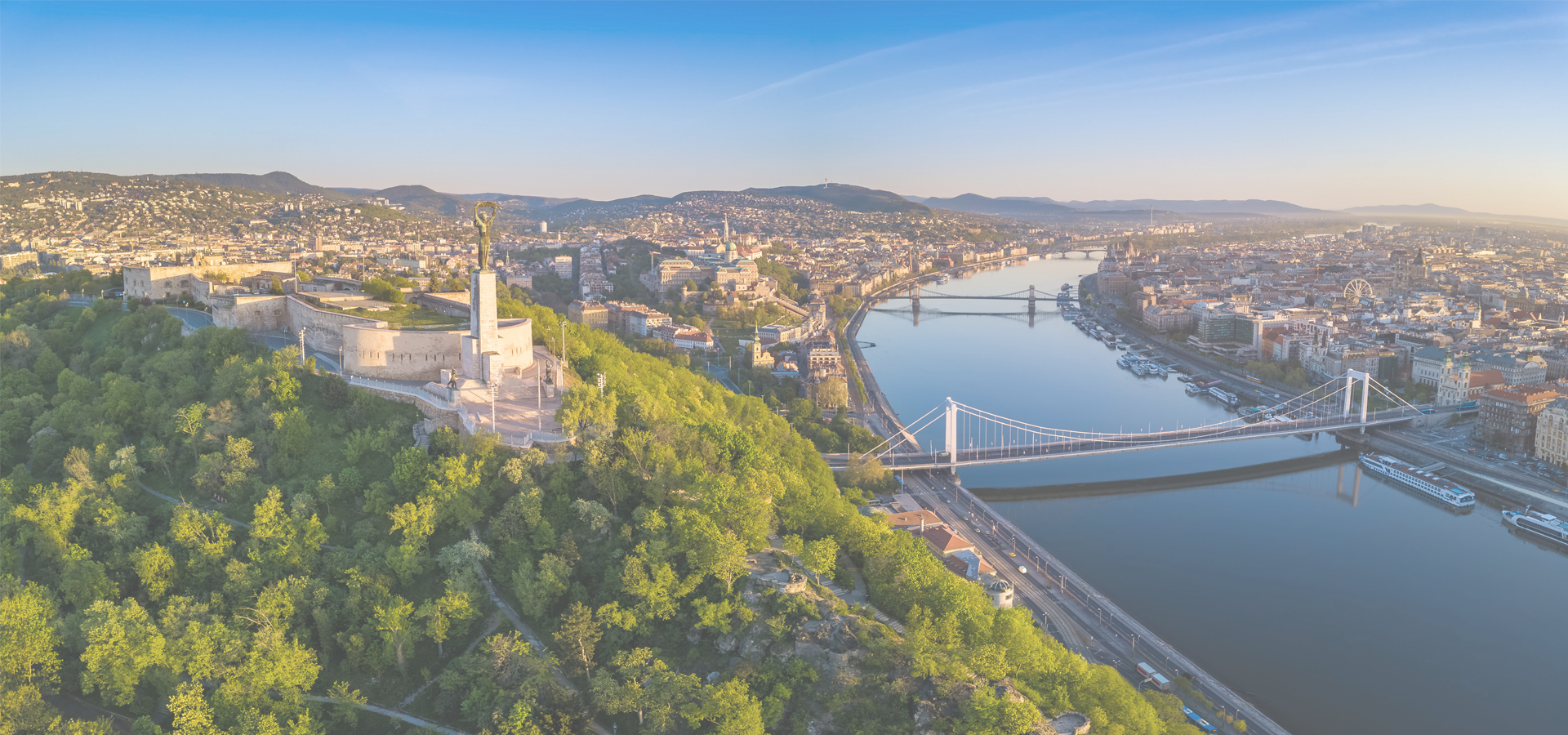Józsefváros, Budapest, Central Hungary Region, Hungary
🇭🇺 Józsefváros (Josefstadt) is the 8th district of Budapest, Hungary. It is the part of the city centre in the wider sense as one of the 18–19th century older suburbs, close to Belváros.
Geography: Location The main streets in Józsefváros are Baross utca, Rákóczi út and Üllői út; Kálvin tér connects this district with the 5th and 9th. Keleti (Eastern) Railway Station is located at the junction of 7th, 8th and 14th districts.
Name The 18th century suburb was first called Alsó-Külváros (literally "Lower Suburb"). It was named after the heir of the Hungarian throne, Emperor Joseph II in 1777.
Description Józsefváros mostly consists of old, often neglected residential buildings with nice interiors. It can be divided into three parts, the borders being Grand Boulevard (Nagykörút) and the roads Fiumei út and Orczy út.
The innermost, central part includes several remarkable spots, such as the National Museum, and the central buildings of the Eötvös Loránd University, the Semmelweis University, the Academy of Drama and Film, and the Metropolitan Ervin Szabó Library, complemented by the Kempelen Farkas Student Information and Resource Centre. The Piarist Secondary School, the main building of the Károli Gáspár University of the Reformed Church, and the law faculty of the Pázmány Péter Catholic University are also situated here, as well as the Hungarian Radio. This part is called "Palace Quarter", out of which one can still see Wenckheim Palace, hosting the Metropolitan Library, and Pálffy Palace with the Classical Music Collection of the above. This neighborhood underwent major renovations between 1996 and 2002 and it has become a happy, swarming place with scores of students and several cafés and pizzerias.
The second part, beyond Nagykörút (about 0.8 km or 1⁄2 mile farther) has a worse reputation, due to the prostitution that was rampant in the 1990s (and earlier), which has been mostly eliminated through cameras throughout the district. In this part one can find the Centre for Foreign Languages (the oldest and "authentic" language examination place in Hungary), Erkel Theatre (a department of the Hungarian State Opera House), the Hungarian Natural History Museum, Corvin Budapest Film Palace (a multiplex cinema), one of Budapest's biggest gardens (Orczy-kert), and a large complex of cliniques.
Its traditional craftsmen neighbourhood, which became a slum in the previous decades, is currently under re-development. The dilapidated 19th century housing stock is cleared to make way for large office blocks and housing developments. Corvin-Szigony Project is the biggest urban renewal project in Central-Europe. The effects and methods of the project were criticized, mainly for the destruction of the architectural heritage of the area.
The residential parts occupy less area in the third part, which is noted for Eastern Railway Station, Józsefváros Railway Station and Kerepesi Cemetery, one of the most famous cemeteries in Hungary, with mausoleums for the most reputable historical personalities.
Neighborhoods • The district is administratively divided into 11 neighborhoods: 1 Palotanegyed; 2 Népszínház; 3 Csarnok; 4 Magdolna; 5 Corvin (neighborhood) ; 6 Losonci; 7 Orczy; 8 Kerepesdűlő; 9 Százados; 10 Ganz; 11 Tisztviselőtelep.
Transport: Metro The following Budapest Metro stations are located in the area: 1 Astoria; 2 Blaha Lujza tér; 3 Keleti pályaudvar; 4 Puskás Ferenc Stadion; 5 Népliget; 6 Nagyvárad tér; 7 Semmelweis Klinikák; 8 Corvin-negyed; 9 Kálvin tér; 10 Rákóczi tér; 11 II. János Pál pápa tér.
Demographics According to 2011 census, the district is relatively homogeneous with the Hungarian majority. Józsefváros is noted for its high concentrations of Roma (Gypsy) residents (4.5%). The district has attracted a significant number of Chinese immigrants (0.8%).
Europe/Budapest/Budapest

Józsefváros has a population of over 76,250 people. Józsefváros also forms one of the centres of the wider Budapest metropolitan area which has a population of over 3,303,786 people.
To set up a UBI Lab for Józsefváros see: https://www.ubilabnetwork.org Twitter: https://twitter.com/UBILabNetwork
Twin Towns, Sister Cities Józsefváros has links with:
🇩🇰 Aalborg, Denmark 🇩🇪 Ibbenbüren, Germany 🇷🇴 Iosefin, Romania 🇦🇹 Josefstadt, Austria 🇹🇷 Küçükçekmece, Turkey 🇮🇹 Pescina, Italy🇨🇭 Winterthur 47.483
🇭🇺 Várkerület 47.483
🇲🇳 Tsetserleg 47.467
🇷🇺 Novocherkassk 47.437
🇭🇺 Pestszentlőrinc-Pestszentimre 47.433
🇭🇺 Pesterzsébet 47.433
🇭🇺 Szentendre 19.069
🇭🇺 Pesterzsébet 19.117
🇭🇺 Budapest XV 19.117
🇵🇱 Częstochowa 19.121
🇭🇺 Erzsébetváros 19.067
🇭🇺 Budapest XIII 19.05
🇵🇱 Bielsko-Biała 19.05
🇵🇱 Siemianowice 19.049
🇵🇱 Siemianowice Śląskie 19.049
🇭🇺 Szigetszentmiklós 19.048
Locations Near: Józsefváros 19.0667,47.4833
🇭🇺 Erzsébetváros 19.067,47.5 d: 1.9
🇭🇺 Budapest 19.05,47.483 d: 1.3
🇵🇾 Areguá 19.051,47.493 d: 1.5
🇭🇺 Várkerület 19.033,47.483 d: 2.5
🇭🇺 Budapest XIII 19.05,47.517 d: 3.9
🇭🇺 Csepel 19.083,47.417 d: 7.5
🇭🇺 Pesterzsébet 19.117,47.433 d: 6.7
Antipodal to: Józsefváros -160.933,-47.483
🇹🇴 Nuku'alofa -175.216,-21.136 d: 16817
🇵🇫 Papeete -149.566,-17.537 d: 16527.3
🇦🇸 Pago Pago -170.701,-14.279 d: 16213.9
🇼🇸 Apia -171.76,-13.833 d: 16141.1
🇺🇸 Hilo -155.089,19.725 d: 12519
🇺🇸 Maui -156.446,20.72 d: 12417.9
🇺🇸 Maui County -156.617,20.868 d: 12402.5
🇺🇸 Wailuku -156.505,20.894 d: 12399